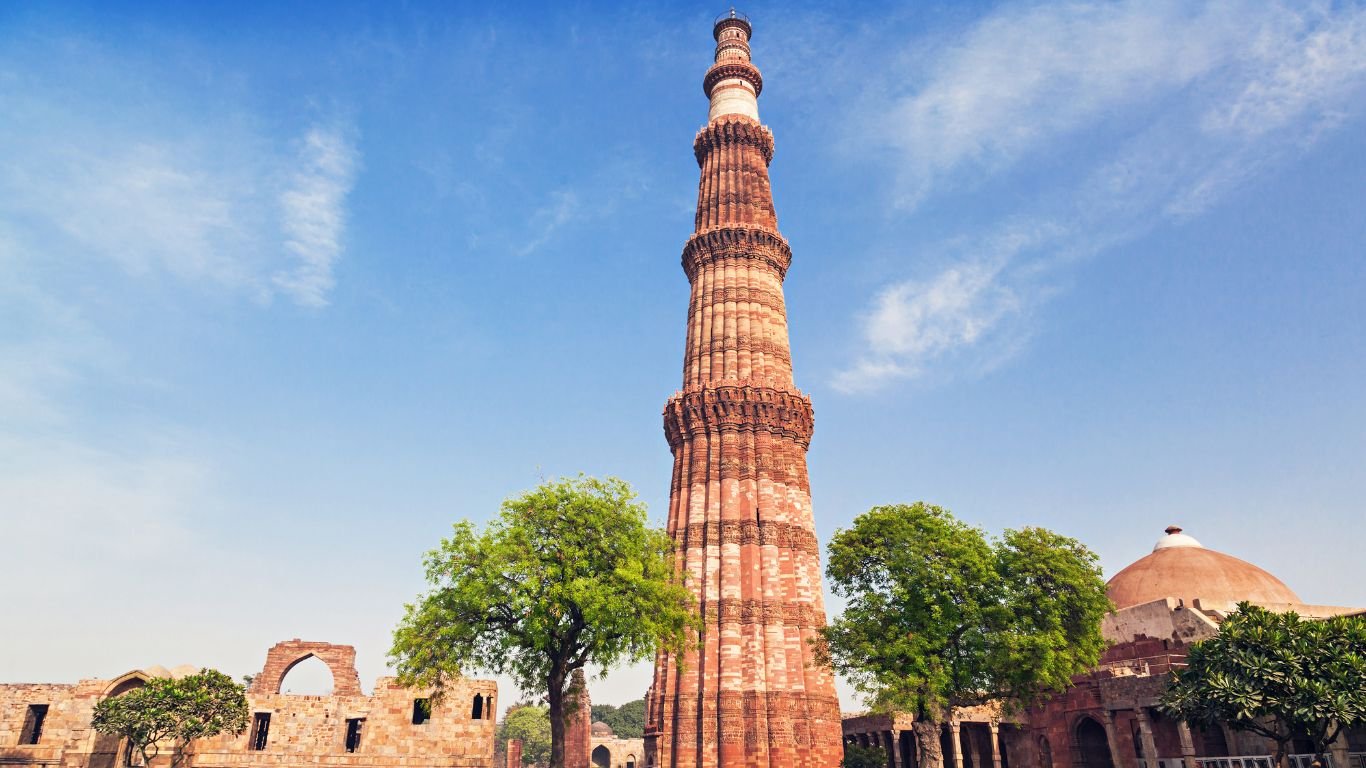5 Must-Visit UNESCO World Heritage Sites in Delhi – Discover the Timeless Beauty
Delhi, the vibrant capital of India, stands as a testament to the country’s rich history and cultural heritage. Steeped in a tapestry of diverse traditions and architectural marvels, the city boasts several UNESCO World Heritage Sites that have withstood the test of time. These sites offer a glimpse into the glory of ancient civilizations and bear witness to Delhi’s evolution over the centuries. In this blog, we will embark on a journey to explore five must-visit UNESCO World Heritage Sites in Delhi that captivate the hearts of visitors from around the globe.
- Qutub Minar – An Icon of Islamic Architecture

Our first stop takes us to the iconic Qutub Minar, a towering masterpiece of Islamic architecture, and the world’s tallest brick minaret. Built in the early 13th century by Qutb al-Din Aibak, the founder of the Delhi Sultanate, the Qutub Minar stands at an impressive height of 73 meters (239 feet). Comprising five distinct stories, each adorned with intricate carvings and inscriptions, the monument is a fine example of Indo-Islamic craftsmanship.
One of the noteworthy features at this site is the Quwwat-ul-Islam Mosque, believed to be one of the earliest mosques in India. The mosque’s unique amalgamation of Hindu and Islamic architectural elements further enriches its historical significance.
- Humayun’s Tomb – A Garden of Eternity

Next on our list is the magnificent Humayun’s Tomb, an architectural wonder that inspired the Taj Mahal. Built in 1570, this UNESCO site is the resting place of Emperor Humayun, the second Mughal ruler of India. The tomb’s impressive Persian-style architecture stands amidst a vast charbagh (four-garden) layout, offering a tranquil oasis within the bustling city.
The symmetrical design, grand domes, and intricate detailing inlaid with precious stones make Humayun’s Tomb an unparalleled masterpiece. Wander through the pathways of the serene gardens and explore the tombs of various Mughal nobles and family members, adding to the charm of this historical gem.
- Red Fort – The Majestic Seat of Power

A visit to Delhi would be incomplete without experiencing the grandeur of the Red Fort. Constructed in the 17th century by Emperor Shah Jahan, the fort served as the Mughal seat of power for centuries. This imposing red sandstone fortress, with its 2.5-kilometer-long walls, was designated a UNESCO World Heritage Site in 2007.
Within the Red Fort’s imposing walls lies a treasure trove of palaces, museums, and picturesque gardens. The Diwan-i-Aam (Hall of Public Audience) and the Diwan-i-Khas (Hall of Private Audience) are notable structures that showcase the artistic finesse of Mughal architecture. Additionally, the fort hosts the iconic annual event of India’s Independence Day, making it a living symbol of the nation’s freedom struggle.
- Jama Masjid – India’s Largest Mosque

A short distance from the Red Fort stands Jama Masjid, one of the largest and most important mosques in India. Commissioned by Emperor Shah Jahan and completed in 1656, the mosque can accommodate up to 25,000 devotees during prayer times. Its striking red sandstone and white marble facade, along with three imposing domes and two minarets, leave visitors in awe of its splendor.
As you step inside, the vast courtyard welcomes you with a sense of serenity, providing a respite from the city’s hustle and bustle. The mosque’s exquisite architecture and the panoramic view from its minarets make Jama Masjid an essential destination for history enthusiasts and architecture lovers alike.
- The Lotus Temple – A Beacon of Unity

Delhi’s cultural diversity is beautifully exemplified by the Bahá’í House of Worship, popularly known as the Lotus Temple. Opened to the public in 1986, this awe-inspiring structure is one of the most visited buildings globally, attracting millions of visitors each year.
The temple’s design takes the form of a blooming lotus flower, symbolizing purity, peace, and unity among different faiths. Made of pure white marble, the building’s lotus-shaped petals appear to float majestically amidst a vast expanse of lush greenery. The temple follows the Bahá’í faith’s principle of welcoming people of all religions, making it a true symbol of communal harmony.
Delhi’s UNESCO World Heritage Sites offer a journey back in time, unveiling the stories of ancient empires, cultures, and architectural brilliance. From the towering Qutub Minar to the serene Lotus Temple, each site reflects the city’s rich past and vibrant present. Exploring these cultural gems provides not only a glimpse into India’s historical legacy but also a chance to witness the profound spirituality and diverse traditions that define the nation’s soul. So, whether you’re a history enthusiast, an architecture admirer, or a seeker of spiritual solace, Delhi’s UNESCO World Heritage Sites promise an unforgettable experience that will leave an indelible mark on your heart and mind.



